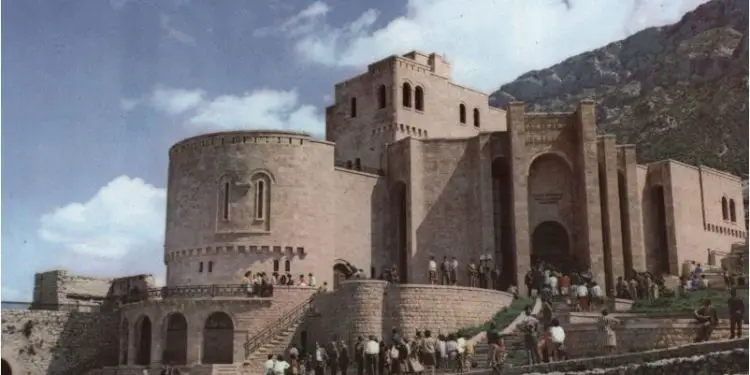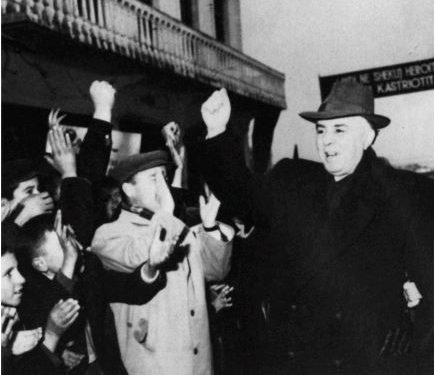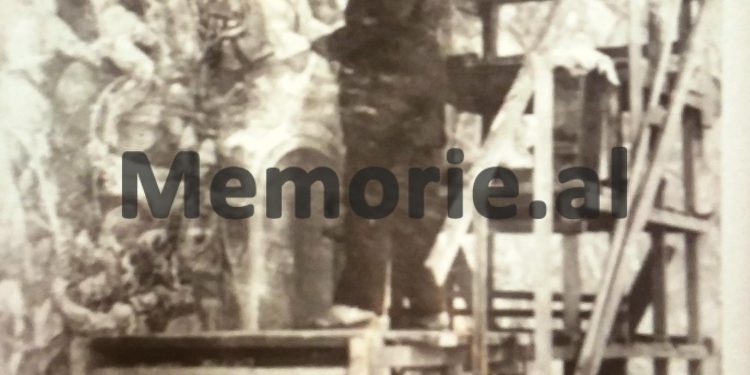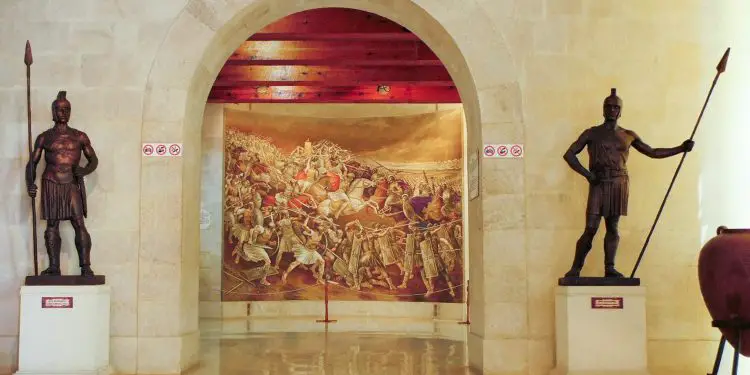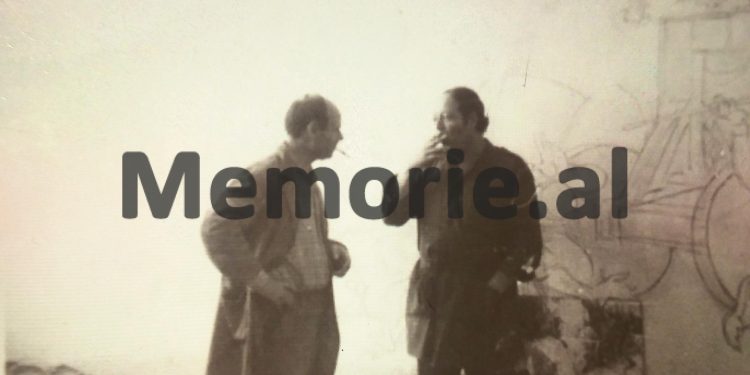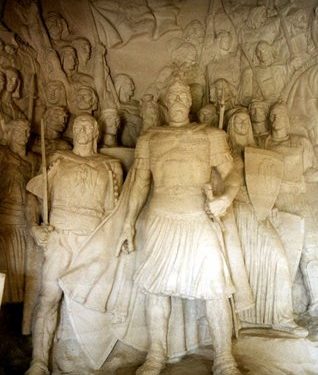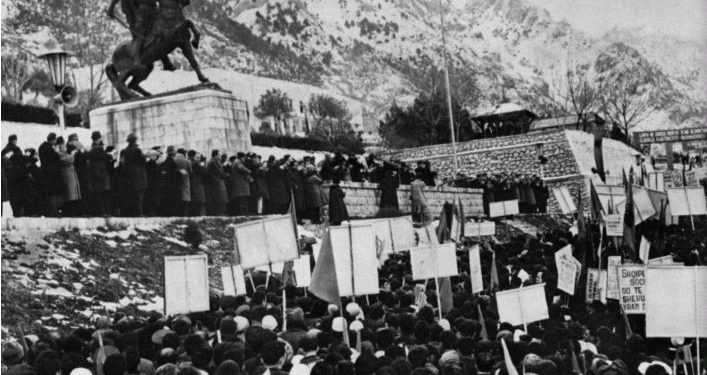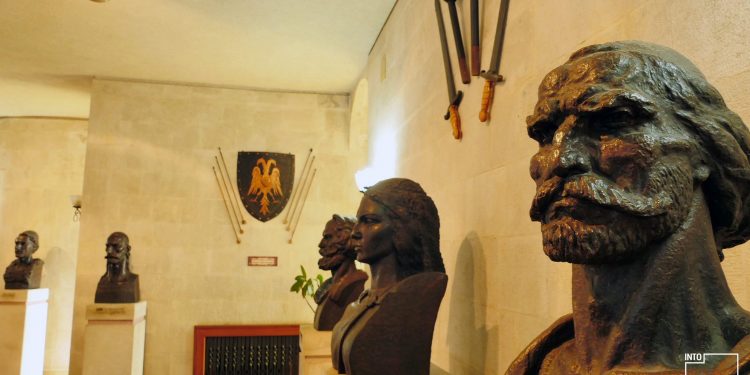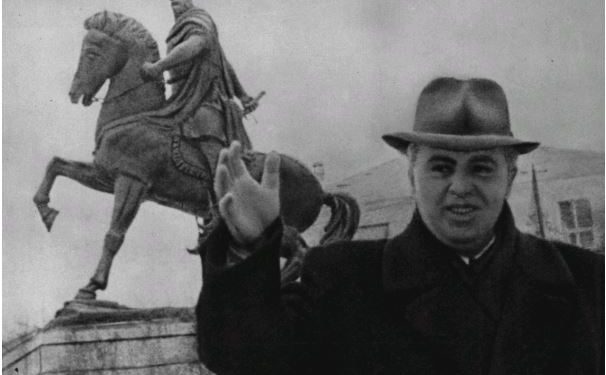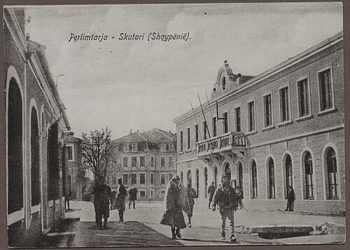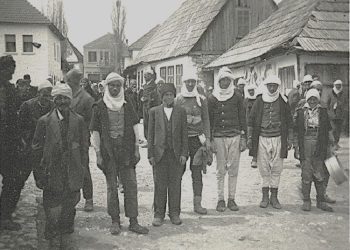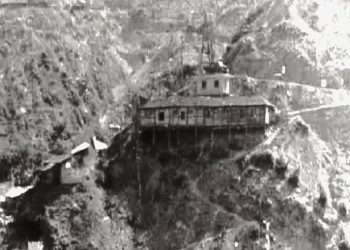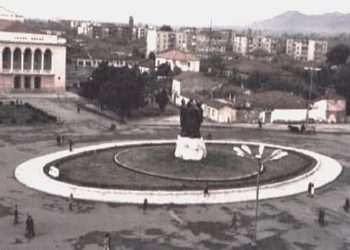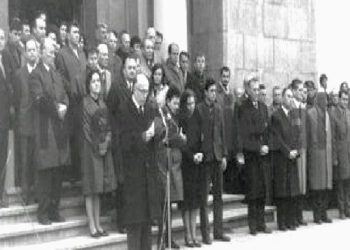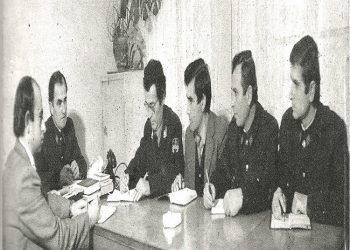Dashnor Kaloçi
Memorie.al publishes an unknown archival document extracted from the fund of the former Central Committee of the ALP (governing bodies), which contains the speech of Enver Hoxha at the meeting held on December 23, 1975 at the meeting of the secretariat of the Committee Central of the ALP, or as it was otherwise called “daily meeting with secretaries”, where he spoke at length and in detail about the design and construction of the Museum “Gjergj Kastrioti Skënderbeu” in Kruja, giving orientations and relevant tasks: since the shape and appearance of that museum, how it would stand in relation to other constructions that were in the castle, where the architects of its designer should be supported, what they should study, with whom they would consult, how they should were the windows of the building, what stone should be worn, what castles should they look at, how would it be decorated from the inside, what furniture should be put there, up to the lighting of the interior of the museum and the colors of the paints they will use in painters for its painting.
“I asked if the architects who will deal with this work are aware of the history of Skanderbeg, and I received the answer that: no special study, except how much they have learned in school about Skanderbeg, have read in any book, have not done. Historians dealing with Skanderbeg’s history have not been consulted either. They think of making the museum home, and the rational national side is considered to be the stone of Zgërdhesh, with which they think of wearing it in the lower belt. No, I said, it is not the stone that gives the museum its national character, because other places have stone houses. The castle is the main moment and no building should dominate over it. There we do something to climb the castle, not like a cauldron, but to preserve the characteristics of the time and to make it look like, and there is no way it doesn’t look like we made it, but it is an art of the century. 15th. We have to find these characteristics in different writings and not only in the writings of Barleti and Noli “. This is how Enver Hoxha addressed, among others, the secretaries of the Central Committee of the ALP, in a daily working meeting held with them on December 23, 1975, when the design and construction of the Museum “Gjergj Kastrioti Skënderbeu” were being discussed. in Kruja. What else did Enver Hoxha say at that meeting regarding the construction of the “Gjergj Kastrioti Skënderbeu” Museum in Kruja and how was it designed and built afterward? In this regard, we know the archival document that was extracted from the fund of the former Central Committee of the ALP (governing bodies), which is the speech of Enver Hoxha in the meeting held on December 23, 1975 at the meeting of the secretariat of the Central Committee of the ALP, or as it was otherwise called “daily meeting” with the secretaries of the Central Committee, where he spoke at length and in detail about the design and construction of the Museum “Gjergj Kastrioti Skënderbeu” in Kruja, giving the relevant orientations and tasks: from the appearance and appearance of that museum, how it would stand in relation to other constructions that were in the castle, where the architects of its project should be supported, what they should study, with whom they would consult, how they had to be the windows of the building, what stone to wear, what castles to look at, how to furnish it from the inside, what furniture to put there, and even the interior lighting of the museum and the colors of the paints to be painted. the painters used to paint it! Furthermore, we know this archival document that Memorie. al publishes in full, as it is in the relevant file of the Central State Archive in Tirana.
Enver’s speech with the secretaries of the Central Committee of the ALP for the construction of the Skanderbeg Museum in Kruja
(From the conversation at the daily meeting of the secretaries of the K.Q. of the ALP)
December 23, 1975
The party secretary must recognize, in addition to domestic life, particular problems. He will go, for example, to the Institute of Studies and Design. Not only will he sit there and listen, but in the end, he will say, “You know these things better yourself.” Of course, the secretary will not go into the design technique but must recognize the Party line for architecture.
He will talk about our national architecture, because, as far as I know, there are only two or three lectures in schools about this, and those “let the tower live” here, “let the tower live” there. Even the people who deal with this work do not have a clear national identity in architecture. I asked how the Skanderbeg Museum in Kruja will be made? I was told that there were some opinions on this issue:
Existing building (which is actually like a barracks) to be fixed. Become another one further. Take a house that is there and modify it. There are also thoughts to be done underground. I told them that this “underground” is the “best” option after Skanderbeg fought “underground”! Surprisingly, what some people don’t think about, but how to make a museum with national characteristics, they don’t kill the mind much. I asked if the architects who will deal with this work are aware of the history of Skanderbeg, and I received the answer that: no special study, except what they have learned in school about Skanderbeg, they have read in any book, they have not done. Historians dealing with Skanderbeg’s history have not been consulted either.
They think of making the museum home, and the rational national side is considered to be the stone of Zgërdhesh, with which they think of wearing it in the lower belt. No, I said, it is not the stone that gives the museum its national character, because other places have stone houses. The castle is the main moment and no building should dominate over it. There we do something to climb the castle, not like a cauldron, but to preserve the characteristics of the time and to make it look like, and there is no way it doesn’t look like we made it, but it is an art of the century. 15th. We must find these characteristics in different writings and not only in the writings of Barleti and Noli.
In order to express the national team well in this museum, it is necessary to do a colossal preparatory and research work, in order to enter well into life and the environment of the time. The 15th-century forts of Italy, Greece, and Yugoslavia should be seen and studied, and not going there when there are plenty of books, engravings, and albums to get acquainted with. In them, you can see how the forts of the time were.
Looking at the new and old forts, the apartments that have been inside them, etc., we will create an idea of what the Skanderbeg Museum should look like. Here in Kruja, the castle was for protection, but we know that there was also a castle for habitation. View the various forts of France; Voban forts there have been famous. Germany also received these types.
It is impossible not to have foreign influences in 15th-century constructions, as in any construction of any time. If we look at them carefully, we will find something in the national team that is not national. We have a corner house, but Turkey also has a lot of corner houses. Let’s find it now, we got it from Turkey, or Turkey got it from us.
The Ottomans stayed here for 500 years. They told me that they had once talked to Alex Buda about these problems, and he also instructed them to do something for Skanderbeg to have the characteristics of the 15th century. The Skanderbeg Museum cannot be built with large windows to solve the problem of light, but the windows should not be made like tower turrets.
In the first place, in appearance, the museum should have the characteristics of a 15th-century Albanian building. From the inside, it is another matter of how the lighting issue can be resolved. It seems to me that in some respects we have moved forward in terms of the national team, for example, in culture, in song, dance, costumes and we have made a lot of progress, while in architecture, we are behind and no effort is made in this direction. how much.
People don’t care much about how to combine the national team with the present. Well tower, what are we going to get from the tower? How is it we will get it? Certainly not. The same goes for the roofs of houses, windows, sofas, etc. The Zakat House in Gjirokastra is not very old, but as it is, it shows how the rich lived and how they were protected from the French on the first floor.
It has the character of an elaborate castle at a later time; when you see her from the outside, she impresses you with her beauty. I am not saying that the museum should be made like the house of Zakat, but I mean that by observing, studying many such houses, and such there are in our country, lines and images can be processed to be both of the time and national characteristics to have.
“Well, well,” the fellow architects said, “so it can be done, but what about time?” we have been given a deadline to finish before a historic date. It seems to me that it is too crooked to rush into making a museum that is not worth the history, just to inaugurate it on a historic date. Historical dates always come, but the museum is done once and for many dates to come. Friends who give orders and set unstudied deadlines for such important things think wrongly as if this is a small enterprise that can be realized by one or two architects. No, setting up the Skanderbeg Museum is a delicate and complex undertaking.
In order to do serious work, commissions must be set up with competent people, historians, architects, and others. In parallel with these, painters and sculptors have to work, who are required to work hard. Give them the themes based on the materials that will be placed on this or that stand, tell them which episodes of the war they will paint and what sculptures they will make.
Not only that, but they also need to be given the size they need, which depends on the location of the event in the museum and not on the desire of the painter or the sculptor. The painter, for example, will not, on this occasion, make a painting according to his head to appear in the competition, but a painting that will serve the event, the historical period in question. For example, he is given to paint the battle of Albulena, Vaikal, etc.
This painter, as well as the architect, must study well and from many sources, the event that he will paint, every detail of the painting must be part of the museum. For this reason, the means of warfare, the types of weapons, swords, cannons, warriors’ clothing, even the original equipment of horses, nature, etc., must be known.
It is necessary to work in parallel with a number of other problems. Museum and furniture; not to assume the comrades who will deal with this work that they will make furniture like the Palace of Brigades. Furniture should be studied where the style of the 15th century stands out. It is another type of wood, the quality of the works changes, but even here there is work, that the history and concrete tools of the 15th-century handicraft must be studied.
Then things in the museum have to be done so responsibly that even the painter cannot work with his head. He too is addicted to the complex of problems we have mentioned. What color should be given to the walls or places that do not have pictures or stands? For this, the painter must connect and coordinate the work with the painter and the architect, ask the painter what colors his picture will have on this wall page. and in combination with this decision the type of paint with which he will paint the wall./Memorie.al






